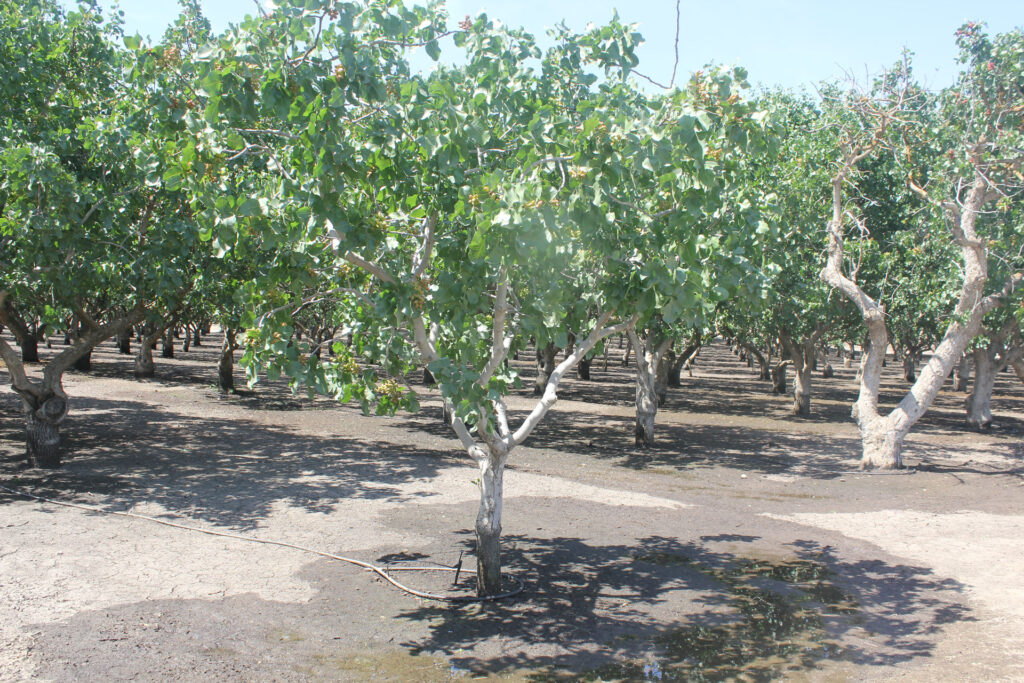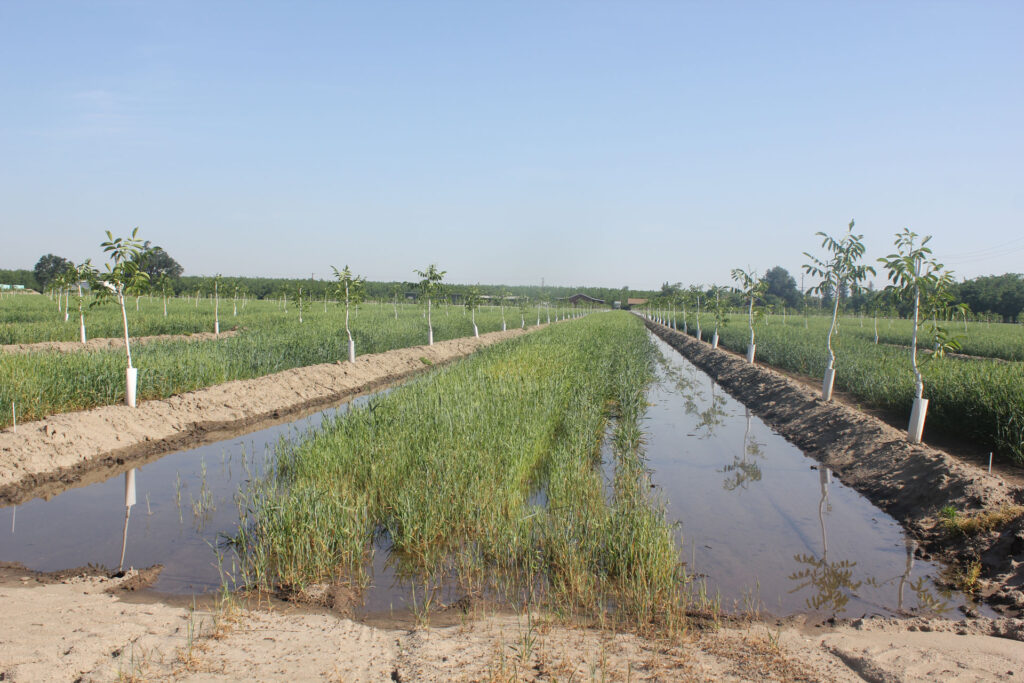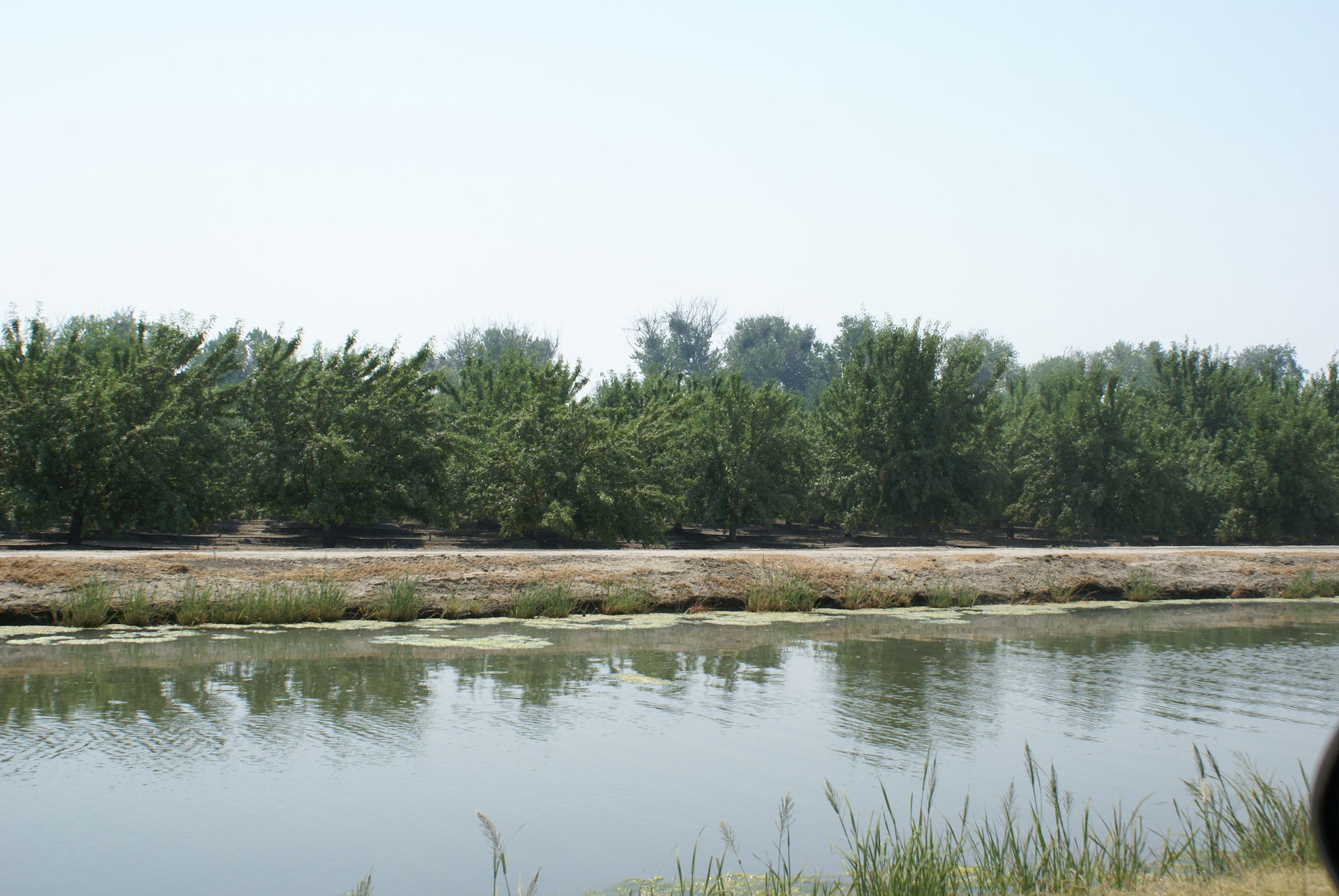This year, long-range weather forecasts from the National Weather Service call for above-normal temperatures for the southern half of the state and cooler temperatures to the north. As for rainfall, much of the Central Valley looks to have less than a 50% chance of precipitation in November.
If this dry forecast proves to be correct, what steps can growers and farm managers take to prevent water stress and set their trees up for bearing next year’s crop?
Keep Up with ET
“They have to continue to stay in farming mode, keep up with irrigation to meet evapotranspiration demands,” said UCCE Orchard Systems Advisor Luke Milliron. Although he works with growers in the northern counties of Butte, Glenn and Tehama, Milliron said there is no guarantee there that rainfall alone will provide enough moisture for trees going into dormancy. During the sudden autumn freeze in November 2020 that severely damaged many California walnut orchards, Milliron and others noted that orchards with soil moisture from recent irrigation fared far better.

Milliron said evapotranspiration rates for tree nut orchards are low during November and December, but those water needs should still be met to encourage photosynthesis and carbohydrate storage going into dormancy. Growers also should think ahead to the next irrigation season and understand they may have to start water earlier in the growing season to refill the soil profile if they do not apply water in the fall or if it does not rain a sufficient amount in November and December. Keeping trees hydrated later in the season also keeps leaves functioning longer and helps tree roots take up nutrients.
Franz Niederholzer, UCCE orchard systems advisor in Colusa, Sutter and Yuba counties, said determining the level of tree stress in November with a pressure chamber helps determine irrigation needs. The worst time for water stress is August to September, but adequate moisture in the late fall contributes to long-term tree health.
He said a good number to aim for in November is -10 to -14 bars for almonds. Readings above -20 bars signal a critical need for water.
Manage Salinity and Nutrients
Salt management is another important consideration in drought conditions. UCCE Orchard Systems Advisor Phoebe Gordon said irrigating with salty groundwater or surface water will lead to problems next spring if leaching cannot be achieved during the winter months where it is necessary. Salts need to be removed from the active root zone. If possible, a leaching fraction should be added to the amount of water applied in the fall.
Historically, orchards in the Sacramento Valley area have less of an issue with salt buildup, Milliron said, and rainfall usually pushes any salt buildup down blow the root zone. However, without adequate leaching during the 2020-21 rainfall season, some Sacramento Valley orchards could be in big trouble if salts are not leached during the 2021-22 rainfall season.
Leaching salts below the root zone is often a priority in the central and southern San Joaquin Valley, Gordon said. In addition to knowing soil properties, it is important to know the quality of the water being applied.
Decreasing water quality and limited supply in a drought year can intensify salinity problems. Recent UC research found salt affected soil resulted in lower yields but also lower water use.

In a Growing the Valley podcast episode, UCCE Advisor Emeritus Allan Fulton noted that ET reports were given until mid-November in 2020, much later in the season than normal due to dry weather. Usually, Fulton said, October rains have exceeded the crop water demand in northern growing areas and there is no need for the report. Water at that point is important as it encourages trees to photosynthesize and store food (energy) for spring bloom.
Filling the soil profile in November is important as it eases the pressure on irrigation next year. Irrigation should be done to maintain moisture in the top foot of the soil. Fulton said that knowing the soils in your orchard will help determine how much rainfall plus irrigation will match the water holding capacity of the orchard.
The goal for growers in drought conditions would be to have full soil moisture capacity at leaf-out in the spring. That is better achieved in the fall rather than spring as rain after a spring irrigation to fill the soil profile can saturate the soil when growing roots need aeration.
Adequate soil moisture can affect nutrient uptake in the fall. Niederholzer said the most common fall nutrient applications are boron, zinc and potassium. Soil moisture is needed for nitrogen and potassium uptake, but research has shown that fall applied N does not achieve a return on investment. Foliar sprays of boron and zinc would be less effective if water stress caused defoliation.
Potassium products need moisture to move into the root zone as they are normally banded down the microsprinkler lines.
Other Considerations
Other concerns with dry orchard soils due to lack of fall rainfall or irrigation include poor soil uptake of pre-emergent herbicides, loss of cover crop stands and potential for freeze damage to young trees.
Sac Valley Orchard Source notes that most pre-emergent herbicides require between 0.25 to 0.75 inches of rain/irrigation for proper incorporation and effectiveness. Plantings that were made in fall can take advantage of winter and spring rains.
Cover crops are normally seeded in the fall to take advantage of early winter rains for germination. Lacking rainfall, these crops can be irrigated up, but that would involve an irrigation system that wets the row middles.
Adequate soil moisture is one of the most important protections for young walnut trees from freeze damage. If a freeze event is forecast, it is also important to irrigate two to three days ahead of the freeze, allowing the soil to accumulate heat.











